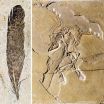(Press-News.org) Around 5,000 cases of DCIS, a condition where cancerous cells are contained within the milk ducts of the breast, are diagnosed each year in the UK, with two thirds diagnosed through breast screening. If left untreated, up to half of DCIS cases could progress into invasive breast cancer, but it is not possible to say which ones, so all women are offered treatment.
This usually involves breast-conserving surgery (lumpectomy) and, to reduce the risk of the cancer returning, radiotherapy to kill any remaining cancer cells.
However, even with treatment up to one in five patients will see their DCIS come back, either as DCIS or as invasive breast cancer.
Now researchers from The University of Manchester and University Hospital of South Manchester NHS Foundation Trust - both part of the Manchester Cancer Research Centre - have investigated the role of a molecule known as FAK in controlling the resistance of DCIS to radiation and in predicting disease recurrence.
Dr Gillian Farnie, whose work at the University's Institute of Cancer Sciences was funded by a five-year £500,000 Breast Cancer Campaign Scientific Fellowship, said: "We know that cancer stem cells are able to avoid or repair damage caused by treatment. We wanted to look at how FAK is involved in this treatment resistance."
The team found that cancer cell samples containing more cancer stem cells had increased levels of FAK and that these samples were better able to survive radiotherapy. By examining patient tissue samples and information about whether each person had had a recurrence, the scientists discovered that high FAK activity was linked to the disease returning, either as DCIS or invasive breast cancer.
In further work, a drug that blocks FAK reduced the formation of mammospheres, or clumps of breast cancer stem cells, showing FAK is important in cancer stem cell activity. By combining this inhibition of FAK with radiotherapy, the group was able to achieve a greater treatment effect than with either therapy alone.
To see if the FAK drug works in more complex living systems, the researchers gave mice with DCIS a treatment to block FAK. In treated mice the DCIS were less likely to turn into invasive-like cancer cells showing FAK is important in the progression of DCIS to invasive cancer.
"We have shown that blocking the activity of FAK not only reduces the growth of breast cancer stem cells, but also improves sensitivity to radiotherapy. Our findings suggest we can reduce the likelihood of DCIS recurring by inhibiting FAK and measuring FAK levels could offer a method to predict which patients are most likely to experience recurrence," added Dr Farnie.
Katherine Woods, Research Communications Manager at Breast Cancer Campaign, said: "There is still so much we don't know about DCIS. It is vital that we get a better understanding of the biology of DCIS as well as what makes it return in some women and become invasive breast cancer.
"This knowledge could help doctors avoid over-treating those patients whose DCIS won't come back, while making sure treatment is working for women who need it. Dr Farnie's research is an important step in this direction, and we are excited to see how the next stages progress.
"Dr Farnie and colleagues have also provided further evidence that cancer stem cells seem be helping cancers to survive treatment. This is a fascinating new field of thought in breast cancer research, especially given the team's findings that we might be able to stop cancer stem cells by blocking the molecule FAK."
INFORMATION:
Support from Asda's Tickled Pink enabled Breast Cancer Campaign to fund Dr Farnie's Scientific Fellowship.
RICHLAND, Wash. – In the Pacific Northwest, young salmon must dodge predatory birds, sea lions and more in their perilous trek toward the ocean. Hydroelectric dams don't make the trip any easier, with their manmade currents sweeping fish past swirling turbines and other obstacles. Despite these challenges, most juvenile salmon survive this journey every year.
Now, a synthetic fish is helping existing hydroelectric dams and new, smaller hydro facilities become more fish-friendly. The latest version of the Sensor Fish – a small tubular device filled with sensors ...
Since 1999, the conjecture by Asher Peres, who invented quantum teleportation, has piqued the interest of many scientists in the field. According to his hypothesis, the weakest form of quantum entanglement can never result in the strongest manifestation of the phenomenon. Today, a team of researchers from the University of Geneva (UNIGE), Switzerland, and the Hungarian Academy of Sciences have proven this conjecture to be false, thus solving one of the most famous problems in quantum information physics. This news was published in Nature Communications review.
The physicist ...
Providence, RI— Results of a new study published in The American Journal of Managed Care show that the presence of a family caregiver during patient recruitment is associated with a greater rate of completion of a post hospital transitional care coaching intervention, particularly among men.
Discharge is a crucial component of the hospitalization process. Patients' understanding and engagement in discharge plans greatly influence their experiences, health outcomes, such as hospital readmission, and overall costs.
The study looked at discharges using the Care Transitions ...
There's more to the decline of the once mighty ancient Assyrian Empire than just civil wars and political unrest. Archaeological, historical, and paleoclimatic evidence suggests that climatic factors and population growth might also have come into play. This is the opinion of Adam Schneider of the University of California-San Diego in the US, and Selim Adali of the Research Center for Anatolian Civilizations in Turkey, published in Springer's journal Climatic Change.
In the 9th century BC, the Assyrian Empire of northern Iraq relentlessly started to expand into most of ...
Washington, DC (November 5, 2014) – Since the 1920s, scholars and politicians have blamed violence in movies and other media as a contributing factor to rising violence in society. Recently the responses to mass shootings in Aurora, CO and at Sandy Hook Elementary followed this theme as media consumption came into the equation. But can consumption of violent media really be a factor in real-world violence? A recent study published in the Journal of Communication by a researcher at Stetson University found that there were no associations between media violence consumption ...
For years, a multidisciplinary team of Johns Hopkins researchers has tracked an elusive creature, a complex of proteins thought to be at fault in some cases of sudden cardiac death. As they report Nov. 5 in the online edition of Nature Communications, they have finally captured images of the complex. Those images reveal the connection between some genetic mutations and electrical abnormalities of the heart and provide a starting point for designing therapies.
Sudden cardiac death is often caused by conditions that affect electrical signaling in the heart. Genetic studies ...
Berlin, Germany (November, 2014) – Reconstructing ancient life has long required a certain degree of imagination. This is especially true when considering the coloration of long-extinct organisms. However, new methods of investigation are being incorporated into paleontology that may shed light (and color) on fossils. Research presented at the recent Society of Vertebrate Paleontology meeting shows the importance of using new imaging technologies in reconstructing the color of Archaeopteryx, one of the most famous and important fossils species.
Ryan Carney of Brown ...
Berlin, Germany (November, 2014) – Unexpectedly one of the largest diamond mines in Africa, Catoca in Angola, holds 118 million year old dinosaur, crocodile and large mammal tracks. The mammal tracks show a raccoon-sized animal, during a time when most were no larger than a rat.
Nearly 70 distinct tracks were recovered in the Catoca mine in Angola. All the tracks were found in a small sedimentary basin, formed about 118 Ma, during the Early Cretaceous, in the crater of a kimberlite pipe.
The most important of these finds are those whose morphology is attributable ...
SALT LAKE CITY, Nov. 5, 2014 – University of Utah engineers developed the first room-temperature fuel cell that uses enzymes to help jet fuel produce electricity without needing to ignite the fuel. These new fuel cells can be used to power portable electronics, off-grid power and sensors.
A study of the new cells appears online today in the American Chemical Society journal ACS Catalysis.
Fuel cells convert energy into electricity through a chemical reaction between a fuel and an oxygen-rich source such as air. If a continuous flow of fuel is provided, a fuel ...
While roses are red, and violets are blue, how exactly do flower colors change?
In the case of penstemons, with over 200 species to choose from, scientists Carolyn Wessinger and Mark Rausher have now shown that turning their flowers from blue to red involves knocking out the activity of just a single enzyme involved in the production of blue floral pigments.
A genetically conserved biochemical pathway produces the vivid blue pigments that they found to mutate over time to produce red. To shift into red pigment production, the enzyme flavonoid 3', 5' –hydroxylase ...



